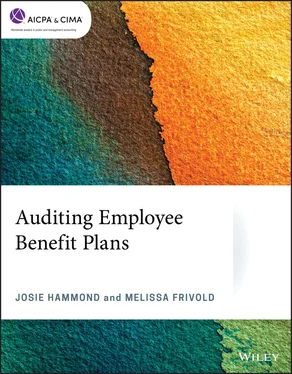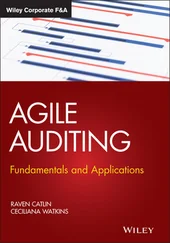1 Cover
2 Chapter 1: Employee Benefit Basics Chapter 1 Employee Benefit Basics Learning objectives After completing this chapter, you should be able to do the following: Recall how a benefit plan is defined according to the Employee Retirement Income Security Act of 1974 (ERISA), generally accepted accounting principles (GAAP), and the IRS. Distinguish the designs and functions of today’s popular benefit plans. Identify the auditor’s responsibility regarding tax compliance matters. Recognize the various parties involved in the operation of a benefit plan and their roles.
Plan as defined by ERISA Plan as defined by ERISA A plan is not just a document. One plan may have several separate documents. Several plans may be found within a single legal document. For purposes of this program, an arrangement is considered a plan if it has the following attributes: Benefits Beneficiaries or participants Funding Administrative system 1 Under ERISA, there are two broad categories of employee benefit plans: welfare and pension.
Plans as defined by GAAP Plans as defined by GAAP Defined contribution and defined benefit These terms relate to how benefits are determined. Under a defined contribution plan, benefits are limited by the contributions to a participant’s accounts. Participant account balances may also be affected by investment experience, expenses, and forfeiture allocations, depending on plan design and funding. A defined benefit plan does exactly that, defines the benefits; that is, the benefits can be determined by reference to the plan design. Sometimes benefits are determined according to a schedule of what will be reimbursed or paid directly to providers, as in medical plans; or developed based on a formula, including factors such as pay or years of service, as in defined benefit pension plans. Neither of these plan types is required to be funded, by the nature of their design. However, ERISA requires that pension plans, whether defined benefit or defined contribution, be funded. Exhibit 1-1 provides a summary of defined contribution and defined benefit plans.
Popular plan types Popular plan types Pension plans Defined contribution plans Profit-sharing plans Profit-sharing plans are defined contribution plans in that they provide individual accounts for each participant, and benefits are based on the amount contributed to the account, along with any income, gains, and forfeiture allocations less an allocated share of expenses and losses. Profit-sharing plans are distinguished from other defined contribution plans because the contribution is usually discretionary. Management or the board of the plan sponsor can choose whether or not to make a contribution in any year and the amount of such contribution. Some of these plans do include formulas for determining the contribution, but that is not required. What is required is that the plan document include a specific formula for allocating the contribution. Some plans allocate the contribution based solely on compensation. Others use a combination of compensation and years of service. It is permissible, within limits, for these plans to allocate higher contribution rates on wages above the Social Security wage base than on wages earned below that level. Some plans employ a concept known as cross-testing or age-weighted formulas. These plans allocate different contribution rates to different employee classes. The plans may be tested for discrimination based upon the future benefit levels provided by these contributions, rather than the current contribution rate. Even with the complexity of concepts such as cross-testing, profit-sharing plans are among the simplest of plan designs. As we cover the tax compliance issues of plans, you will note that profit-sharing plans are exempt from some of these requirements.
Tax compliance elements Tax compliance elements As noted earlier, the operation of a benefit plan is substantially controlled by the tax code. Thus, the auditor is advised to have a working understanding of these elements. Most of the rules for pension plans are found in Sections 401 through 416 of the IRC. Welfare benefit plans have fewer code rules, and those rules are scattered throughout the IRC. GAAS does not require that the auditor have a thorough understanding of the intricacies of these tax rules. GAAS limits the auditor’s duty for compliance matters to those that could affect a significant financial statement account. It is important for the auditor to be able to identify the type of elements involved in the operation of the plan and where they might have financial statement effect. It is important for inquiries to be made as to whether the appropriate tests have been conducted and whether the tests have been passed or failed. Where such tests have been failed, the auditor needs to understand the effect on the plan’s financial statement. This may involve a contribution receivable or a payable to refund impermissible amounts. In addition, the auditor needs to be able to recognize that other items uncovered during the audit may have an effect on the tax status of the plan. Where such events are discovered, the auditor needs to assess the effect on the financial statements and obtain appropriate representations that any actions required to retain the plan’s exempt status will be taken. The easiest way to understand these tax rules is to approach them from the formation through annual operations to termination of a plan. Even though benefit plans are typically exempt from income taxes, it is important for the auditor to assess whether or not there are any uncertain tax positions. This is because the plan can face uncertainty with respect to retaining its tax-exempt status, or where the plan’s investment activity generates unrelated business income tax. This will be addressed in more detail in the discussion of unrelated business income tax in the following sections.
Key plan operational concepts Key plan operational concepts Fiduciary conduct Both Title I (DOL provisions) and Title II (IRS provisions) of ERISA require that the plan be operated for the benefit of the plan participants and beneficiaries. This is the fiduciary duty. The Plan Administrator and the Trustee are typically the “fiduciaries” with respect to the plan. But, ERISA defines that term much more broadly. Basically, any party that has discretionary authority with respect to the plan may be classified as a “fiduciary.” The result is that all of those parties must exercise this standard of care with respect to the plan participants or beneficiaries. This is sometimes referred to as the “prudent expert” standard as it is not just a layman’s standard of care, but the standard of care expected of a person who is familiar with the law. A fiduciary is required to follow the plan agreement, except to the extent that the written agreement is at odds with ERISA.
Understanding the plan under audit Understanding the plan under audit The benefit and plan structure intended by the plan sponsor must be practiced in form. If more than one type of benefit is offered under the same plan, then the plan should be written accordingly. If benefits are to be offered under separate plans, it should be remembered that the reporting and filing requirements apply to each plan. Benefits do not stand-alone. They must be contained within a plan. The audit requirement, like the Form 5500 filing, is based on plan definition, with some exceptions, covered in the following exhibit under plan entities. Generally, only one plan at a time, pension or welfare, can be covered by a Form 5500. Proper reporting requires a complete understanding of the plan and benefit structure. The following 3 exhibits outline unique audit considerations by plan type, tax considerations in an employee benefit plan audit and provide a quick reference chart for Form 5500.
Читать дальше











